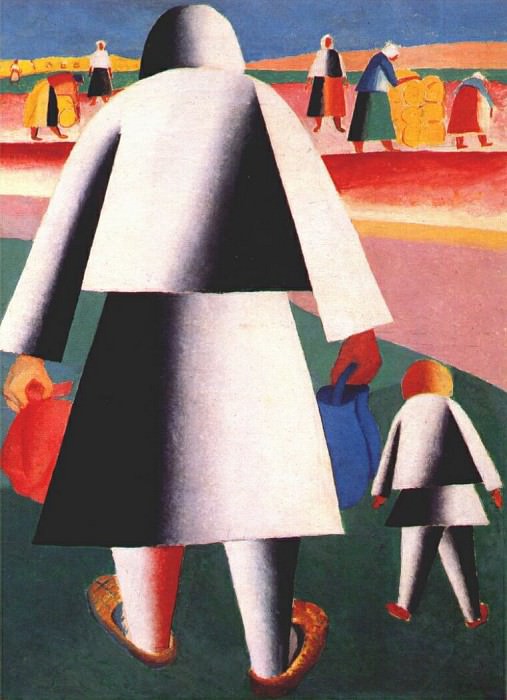malevich to the harvest (marfa and vanka) c1927-9 Kazimir Malevich (1879-1935)
Kazimir Malevich – malevich to the harvest (marfa and vanka) c1927-9
Edit attribution
Download full size: 760×1050 px (0,1 Mb)
Painter: Kazimir Malevich
In the works of the Soviet avant-garde artist Kazimir Malevich, human characters are not very frequent guests. But when the author nevertheless took up the image of people, as a rule, they were created from peculiar curved suprematic planes. This is a characteristic feature of the artistic direction of Suprematism, whose founder was Malevich. Before writing this work, the author creates a canvas called "Vanka".
Description of Kazimir Malevich’s painting "At Harvest (Marfa and Vanka)
In the works of the Soviet avant-garde artist Kazimir Malevich, human characters are not very frequent guests. But when the author nevertheless took up the image of people, as a rule, they were created from peculiar curved suprematic planes. This is a characteristic feature of the artistic direction of Suprematism, whose founder was Malevich.
Before writing this work, the author creates a canvas called "Vanka". The boy in the painting "To the Harvest" is an exact copy of "Vanka", he is depicted with his back to him, his head pulled into the shoulders. Despite the primitiveness of the forms, the artist succeeded in conveying movement - we distinctly understand that the boy is walking forward, moving away from us. The female figure (Marfa) is executed in the same manner as the boy, only his head is covered in a shawl and he is holding a bundle and a bucket.
The people in the background are depicted cleaning hay. In contrast to the monochromatic central characters, the secondary characters are painted in bright colors.
The painting belongs to Malevich’s second peasant cycle. It is interesting that in the first peasant cycle there was a work called In the Field, which was later lost. Only a sketch of the work has survived, but in comparison one can clearly see the differences between the two periods of the author’s work - pre-supremacist and post-supremacist. In Malevich’s original paintings, the horizon did not exist as such, but later it is clearly marked. Also in later works, space gains direction and perspective due to the clear division into sectors, usually of color.
In his autobiography, the artist wrote that he was always fascinated by the theme of peasant labor. One way or another, these works, quite unusual for the average viewer, along with the "Black Square" have immortalized the work of Kazimir Malevich.
Кому понравилось
Пожалуйста, подождите
На эту операцию может потребоваться несколько секунд.
Информация появится в новом окне,
если открытие новых окон не запрещено в настройках вашего браузера.
You need to login
Для работы с коллекциями – пожалуйста, войдите в аккаунт (open in new window).




















You cannot comment Why?
Perhaps it’s a painting of a woman holding a child’s hand and a man.